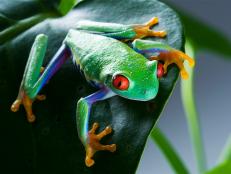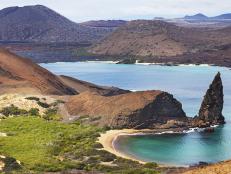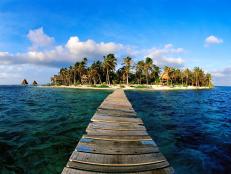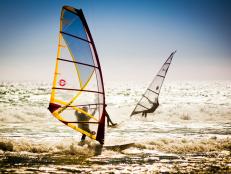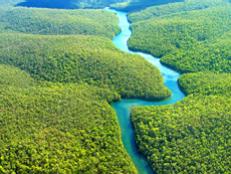Wild Galapagos Islands
Visit the Galapagos Islands. Enjoy fun outdoor activities, and explore the wonderful wildlife, including sea lions, giant tortoises, lava lizards, whitetip reef sharks and penguins.

By:
Kwin Mosby
Related To:
lessRelated To:
View The Gallery
1 / 14
Sea Lions
Some travel companies on the Galapagos Islands offer tours that provide tourists with an opportunity to see sea lions chillin’ in the sun. There are 2 species of sea lions on the islands. A sea lion (featured) has a thin fur coat and usually hangs out on beaches and rocky shorelines. Fur sea lions only live on rocky shorelines and have a thick fur coat.
San Cristóbal Island
San Cristóbal Island -- aka Chatham Island to English speakers -- is the easternmost island in the Galapagos Islands, and one of the oldest geologically. The island has 2 popular dive sites, Kicker Rock and Isla de Lobos. If you’re into birdwatching, then head to the Laguna El Junco, the largest freshwater lake in the archipelago. The lake harbors a large population of birdlife.
Blue-Footed Boobies
Birdwatchers flock to this part of the world to see a variety of wildlife unique only to the Galapagos Islands. Visit Espanola Island and North Seymour Island for an up-close-and-personal view of the blue-footed booby. Males and younger birds usually have lighter feet than females.
Giant Tortoises
Some Galapagos tortoises can weigh over 500 pounds and measure 6 feet from head to tail. These turtles have a unique water storage capacity; they can go more than a year without any food or water. Some subspecies are threatened or in danger of extinction, while others have stable and growing populations, thanks to the efforts of conservationists and the Charles Darwin Foundation.
Land Iguanas
Fernandina, Isabela, Santa Cruz, North Seymour, Espanola and South Plaza Islands are home to between 5,000 and 10,000 land iguanas. English naturalist Charles Darwin claimed that there were so many iguanas on James Island that setting up a tent was a monumental task.
Galapagos Hawks
These hawks are the largest birds on the Galapagos Islands. The buzzard-like birds feed on lava lizards, snakes, young marine iguanas and chicks of sea birds. The best places to spot these feathered creatures are on Espanola, Santiago, Santa Fe, Isabela and Fernandina Islands.
Barthlomé Island
Take a stroll along a path to Pinnacle Rock Overlook to get an awe-inspiring view of Bartolomé Island, a volcanic islet just off the east coast of Santiago Island. The island was named after Sir Bartholomew James Sulivan, a lifelong friend of naturalist Charles Darwin.
Galapagos Penguins
The biggest populations of Galapagos penguins are on the islands of Fernandina and Isabela. This type of penguin is distinguishable from other species because of an upside-down horseshoe shape around its stomach, which extends down to its legs.
Surfing
Hit the waves! The Galapagos Islands are a popular destination for surfers. Baltra Island’s Aeolian Cove, San Cristóbal Island’s Punta Carola, Santa Cruz Island’s Las Palmas and Isabela Island’s Playa Barahona are just a few of the best surfing spots in the archipelago.
Darwin Island
Take a dive near Darwin’s Arch off the coast of Darwin Island. This island was named in honor of naturalist Charles Darwin, and it is among the smallest islands in the Galapagos archipelago. The tropical waters around the island are a prime spot for divers to explore the marine life, including whale sharks, green turtles, manta rays and dolphins. Darwin Island is not open to land visits.
Whitetip Reef Sharks
Whitetip reef sharks can be easily identified by their pointed nose, silver-gray color and the white tips on their tail. Fearless and curious, whitetip reef sharks may approach swimmers closely but are seldom aggressive unless provoked. Devil’s Crown on Floreana Island and Black Turtle Cove on Santa Cruz Island are just a couple prime places to see this specific species of sharks.
Santa Cruz Island
The second largest island after Isabela, Santa Cruz Island is a large dormant volcano, located in the center of the archipelago. Its capital, Puerto Ayora, is the most populated urban center in the islands. The town’s southern shore is lined with cactus, marine iguanas, pelicans and the blue-footed booby that coexist among tourist boats, restaurants, small hotels and houses.
Snorkeling
Go snorkeling to see batfish (pictured), hawkfish, blue-chin parrotfish, bumphead damselfish and more. The myriad fish in the Galapagos are enough to keep any swimmer entranced for hours. The best time for snorkeling is from December to May.
Lava Lizards
Head to Santiago, San Cristóbal or Santa Cruz Islands for your chance to get a glimpse of a lava lizard. There are 7 different species of lava lizards found in the Galapagos. The male lava lizard is larger than the female and they look distinctly different. The overall color patterns are different, and the females have bright red skin under their throats.

